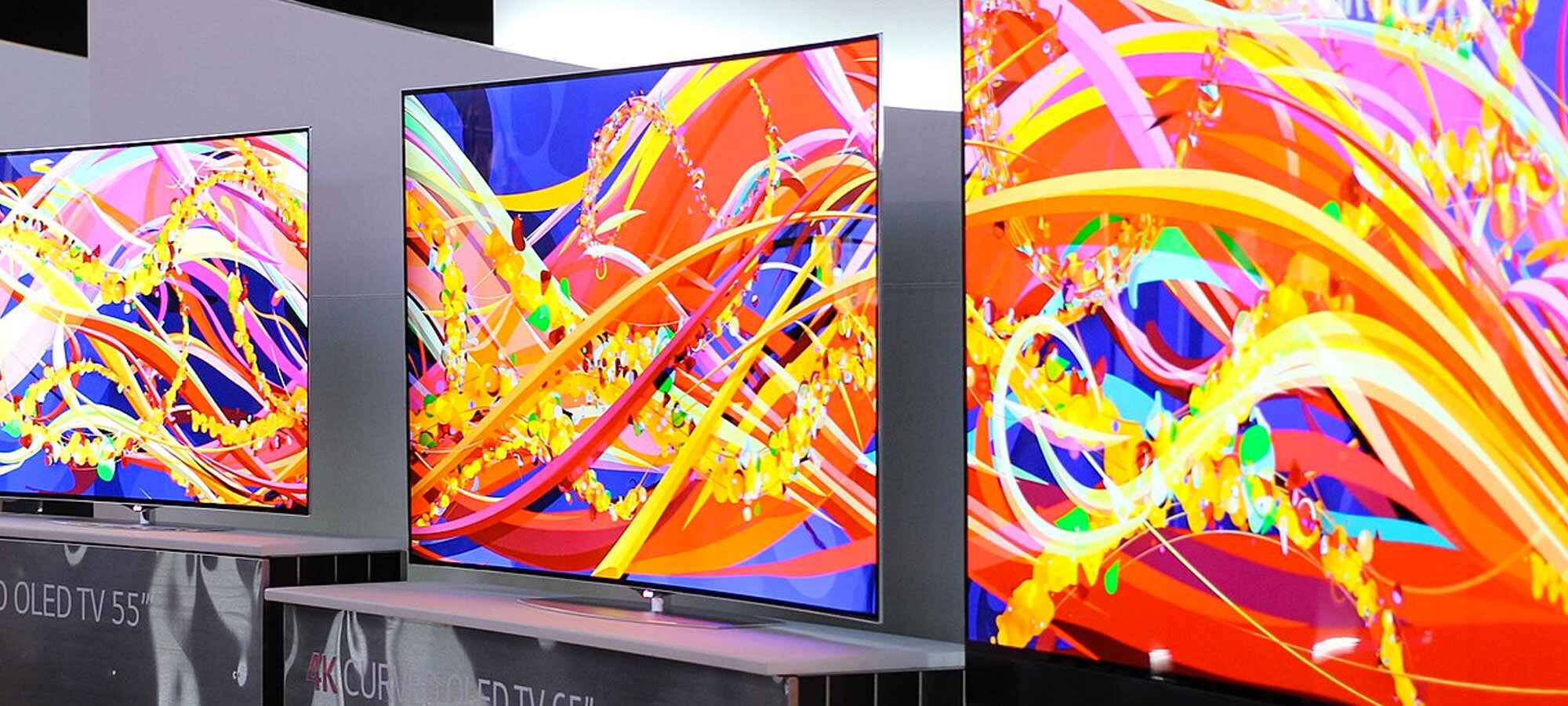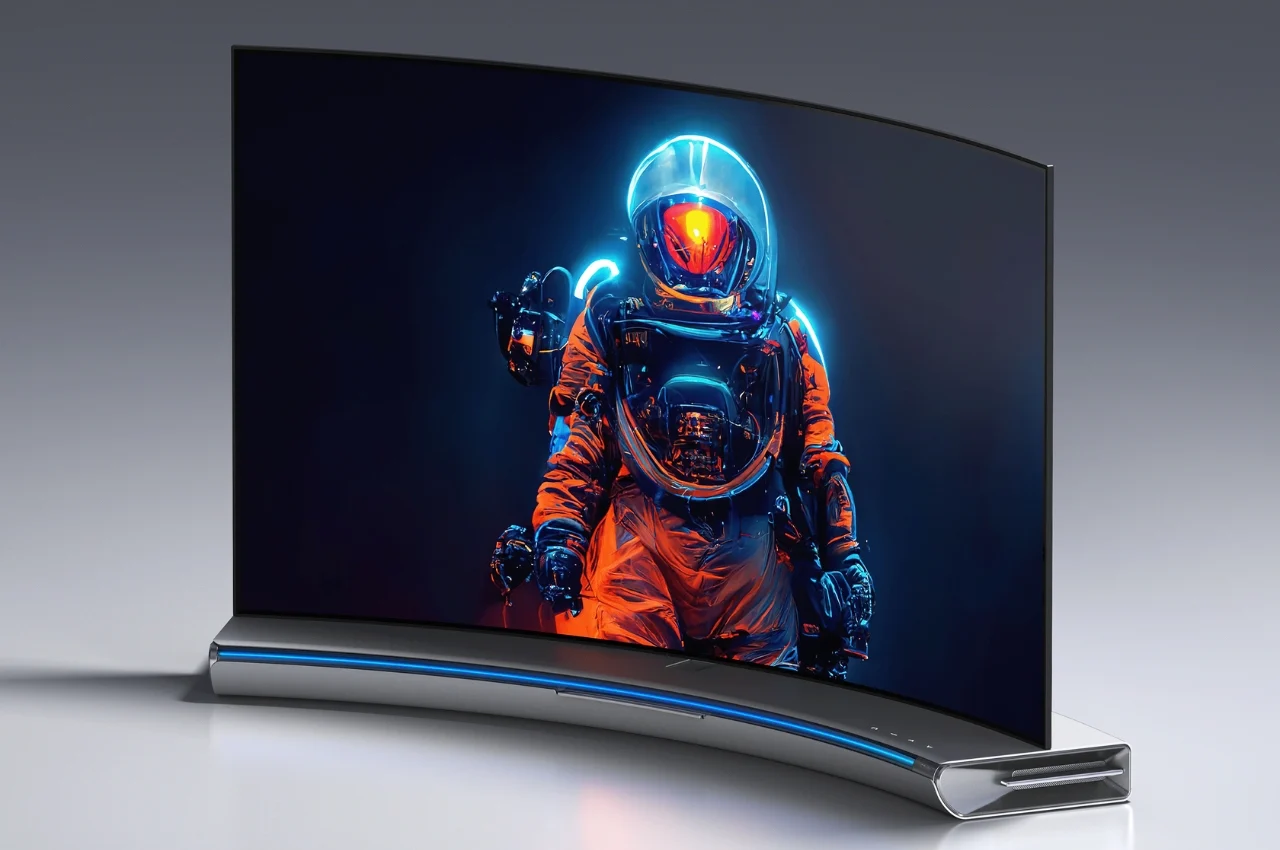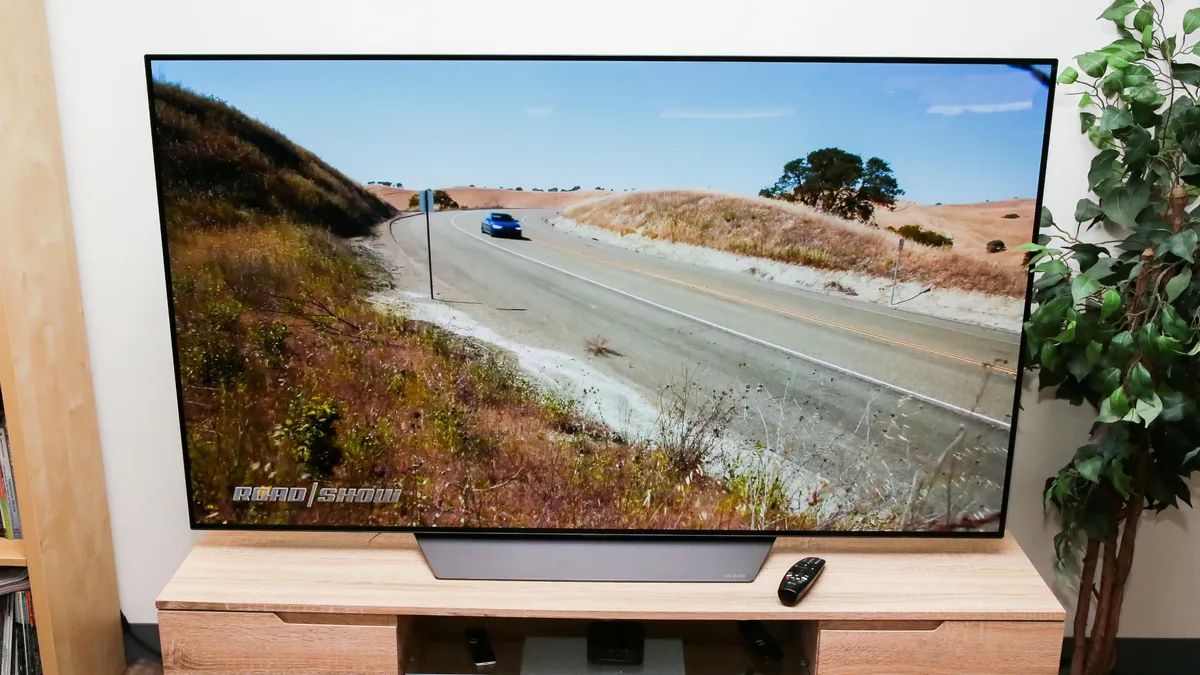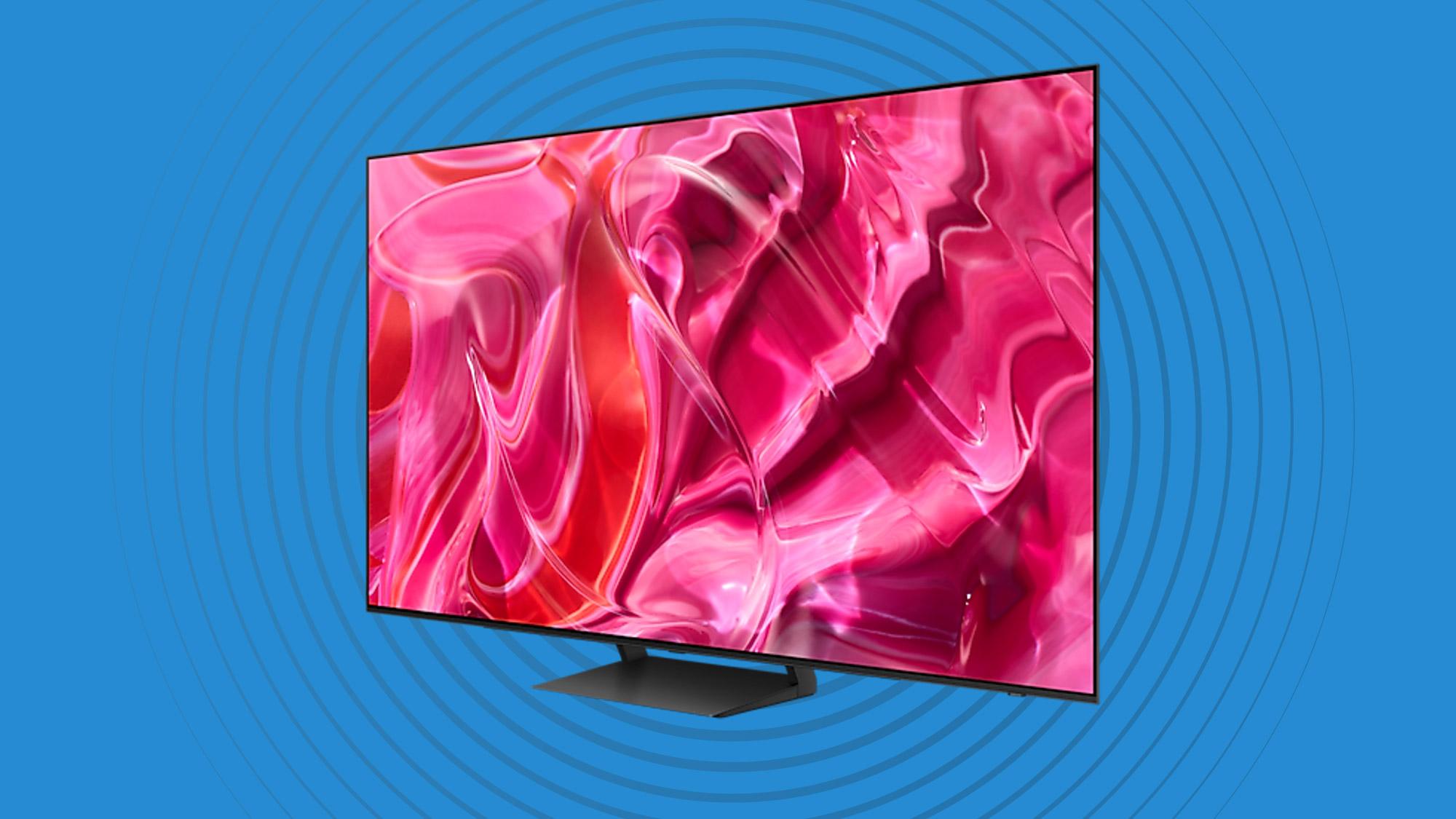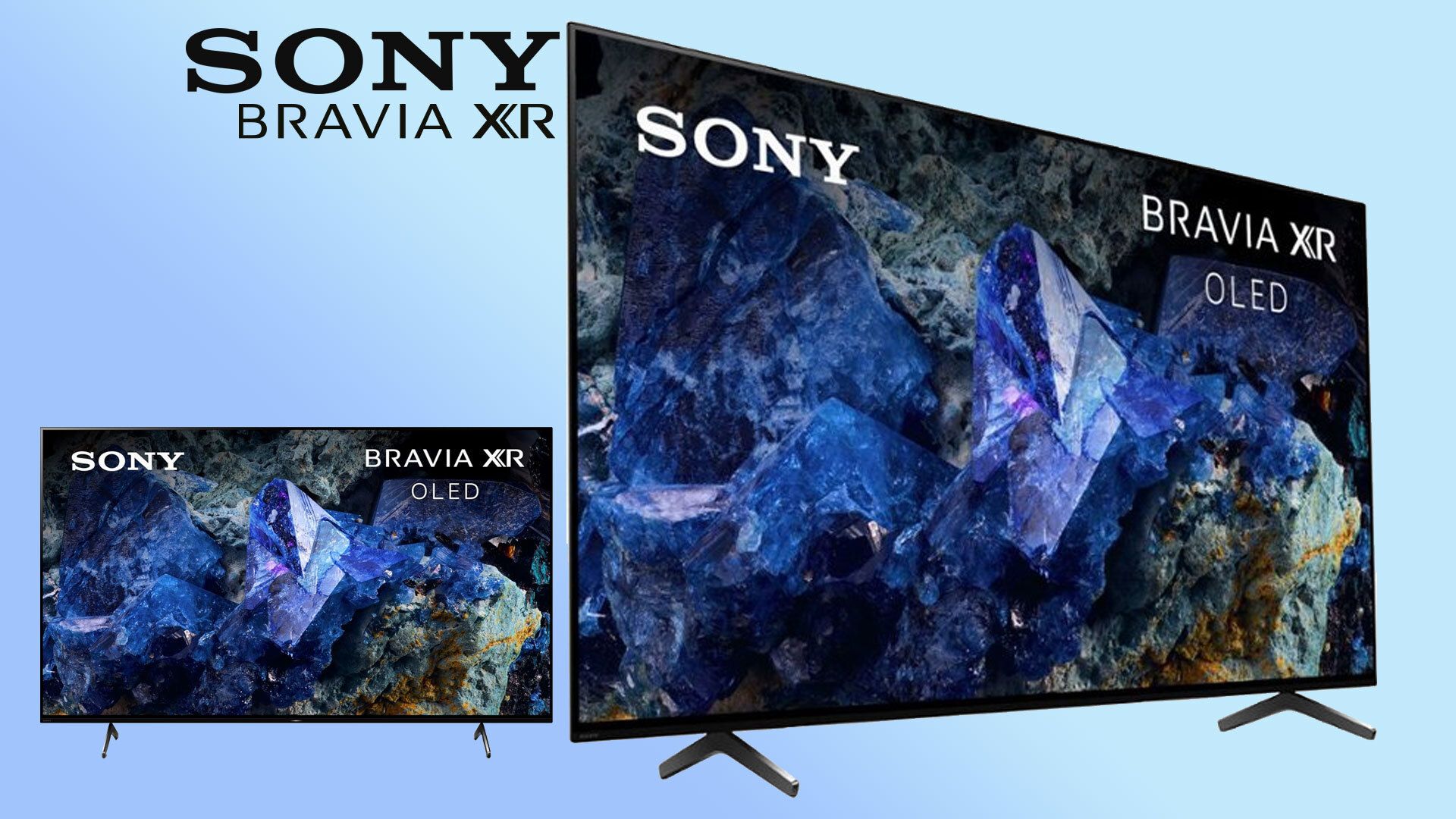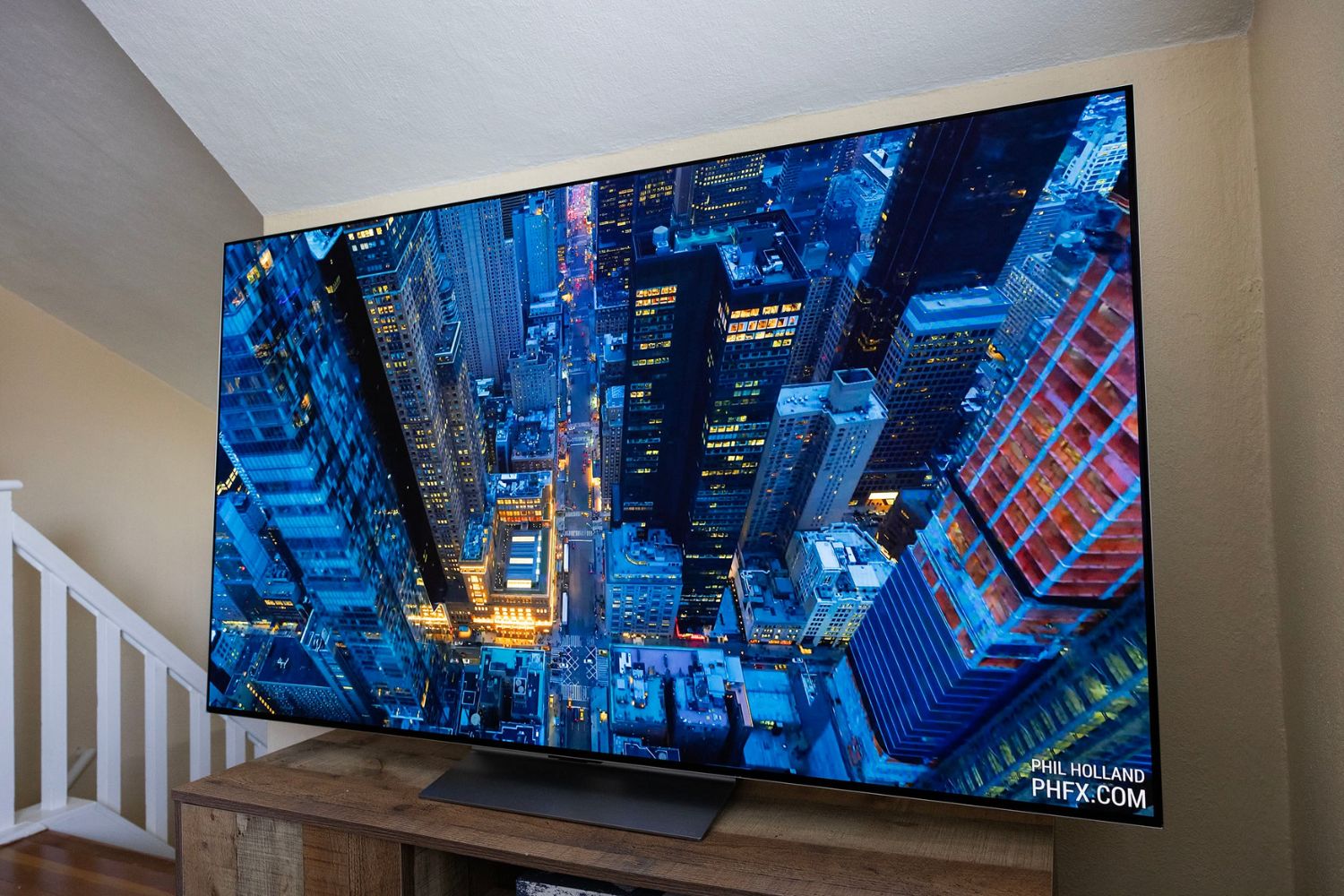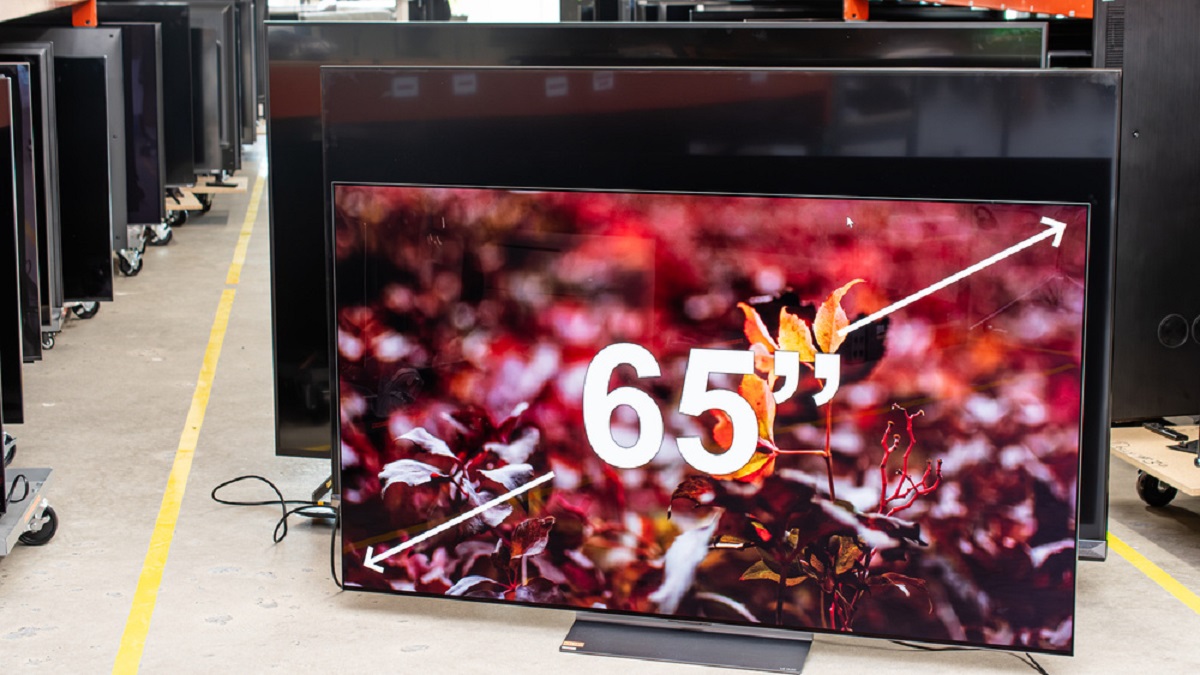Enhanced Picture Quality
One of the key advantages of OLED TVs is their exceptional picture quality. OLED, which stands for Organic Light Emitting Diode, technology allows individual pixels to emit light, resulting in a stunning display with vibrant colors and deep blacks.
The self-emissive nature of OLED technology means that each pixel can be turned on or off independently, offering true black levels and infinite contrast. This produces a more realistic and immersive viewing experience, where dark scenes appear truly black and bright scenes appear incredibly vivid and lifelike.
The OLED panel’s ability to display pure blacks is a game-changer in terms of picture quality. Unlike traditional LCD TVs, where backlights have to illuminate the entire screen, OLED TVs can completely switch off pixels to achieve true black. This not only enhances the contrast, but it also adds depth and detail to the image.
Furthermore, OLED technology delivers enhanced color accuracy and a wider color gamut compared to traditional LCD panels. Each individual pixel on an OLED display can produce its own light, resulting in more precise color rendering. This allows for a more accurate and lifelike reproduction of colors, bringing images to life.
With OLED, you can expect to see rich, vibrant colors that are true to the original content. Whether you are watching a nature documentary with vivid landscapes or a movie with breathtaking special effects, OLED TVs ensure that you experience the content as intended by the creators.
In addition to the rich colors and deep blacks, OLED panels also provide excellent viewing angles. Unlike LCD displays, which can suffer from color shifting and dimming when viewed from off-center positions, OLED TVs offer consistent picture quality from any angle. This makes OLED TVs ideal for larger living rooms or spaces where multiple viewers can enjoy an immersive viewing experience without any compromise in visual quality.
Wide Viewing Angles
One of the standout features of OLED TVs is their ability to maintain excellent picture quality even when viewed from wide angles. Unlike conventional LCD TVs, which suffer from color shifting and loss of contrast when viewed off-center, OLED displays provide consistent and accurate colors regardless of where you are seated.
This is made possible by the individual pixel technology of OLED panels. Each pixel in an OLED TV can emit its own light, resulting in a truly self-illuminating display. Unlike LCD panels that rely on a backlight to illuminate the screen, OLED pixels emit light directly, allowing for precise control over their intensity.
Because of this pixel-level control, OLED TVs exhibit minimal changes in color and contrast when viewed from different angles. This means that you can enjoy a stunning picture quality no matter where you sit in the room. Whether you’re sitting directly in front of the TV or off to the side, the colors will remain vibrant and accurate, and the contrast levels will be maintained.
Wide viewing angles are particularly beneficial for those who love to host movie nights or watch sports events with friends and family. With OLED TVs, everyone in the room can have an optimal viewing experience, regardless of their seating position.
In addition to the practical benefits, the wide viewing angles of OLED displays also contribute to the overall immersion and enjoyment of content. Whether you’re engrossed in a thrilling action movie or immersed in a visually stunning nature documentary, the ability to see accurate colors and sharp details from any angle enhances the realism and brings the content to life.
Thanks to OLED technology, you no longer have to worry about finding the perfect spot in the room to get the best view. With wide viewing angles, everyone can enjoy the same stunning picture quality, creating a more inclusive and enjoyable entertainment experience for all.
High Contrast Ratio
OLED TVs are renowned for their exceptional contrast ratio, which is a crucial factor in determining picture quality. Contrast ratio refers to the difference between the brightest whites and the deepest blacks that a display can produce, and OLED technology excels in this aspect.
Unlike traditional LCD TVs, which rely on a backlight to illuminate the screen, OLED TVs utilize self-emitting pixels that can individually turn on and off. This capability allows OLED displays to achieve perfect black levels by simply switching off the pixels in dark areas of the image. As a result, OLED TVs offer an infinite contrast ratio, meaning there is no limit to the level of differentiation between bright and dark areas on the screen.
The deep blacks produced by OLED panels contribute immensely to the overall picture quality. With true black levels, you can experience enhanced depth and realism in your content. Whether you’re watching a movie with dark, atmospheric scenes or playing a video game with shadows and dimly lit environments, the deep blacks provided by OLED TVs create a more immersive and captivating viewing experience.
The high contrast ratio of OLED displays also enhances the overall sharpness and detail in the image. The ability to accurately differentiate between bright and dark areas allows for finer gradations and more defined textures. This means that you can see intricate details and subtle nuances in your favorite movies, TV shows, and games.
Additionally, the high contrast ratio contributes to greater color vibrancy and accuracy. When paired with the deep blacks, colors appear more vibrant and rich, creating a visually stunning display.
Whether you’re watching a movie with stunning cinematography, enjoying a sports event with vibrant uniforms, or playing a video game with dynamic visuals, the high contrast ratio of OLED TVs ensures that you can fully appreciate the depth and richness of the content.
In summary, OLED technology’s ability to achieve perfect black levels and infinite contrast ratio elevates the picture quality, allowing for enhanced details, realistic visuals, and vibrant colors. The result is a truly immersive and engaging viewing experience.
Vibrant Colors
When it comes to color reproduction, OLED TVs are in a league of their own. Thanks to their unique pixel-level control, OLED displays can deliver vibrant and accurate colors, bringing your favorite movies, TV shows, and games to life.
OLED technology allows each individual pixel to emit its own light, resulting in precise and vibrant color rendering. Each pixel can be turned on or off independently, allowing for incredibly accurate color reproduction and eliminating color bleeding or smudging that can occur with other display technologies.
With OLED TVs, you can expect colors to be rich, saturated, and true to life. Whether you’re watching a scenic nature documentary with lush greens and blues or a visually stunning animated film with vibrant hues, OLED displays ensure that the colors are reproduced with exceptional accuracy and vibrancy.
The vibrant colors produced by OLED technology enhance the overall viewing experience, making the content visually captivating and immersive. You’ll be able to see every shade and gradient in the image, from the subtlest pastels to the most vivid and striking tones.
In addition to accurate color reproduction, OLED displays also offer a wide color gamut, covering a larger range of colors than conventional LCD displays. This wider color spectrum allows for more realistic and nuanced color representation, resulting in more lifelike images.
Whether you’re watching movies, sports events, or playing video games, the vibrant colors of OLED TVs ensure that you won’t miss any of the details and nuances in the visuals. The colors will pop off the screen, immersing you into the content and creating a truly captivating viewing experience.
Overall, OLED technology’s ability to deliver vibrant, accurate, and true-to-life colors makes OLED TVs the top choice for those who appreciate stunning visuals and an immersive viewing experience.
Energy Efficiency
OLED TVs are not only known for their stunning picture quality but also for their energy efficiency. Compared to traditional LCD TVs, OLED displays consume significantly less power, making them a greener and more cost-effective option in the long run.
One of the main reasons for the energy efficiency of OLED TVs is their self-emissive pixel technology. Unlike LCD TVs that require a separate backlight to illuminate the screen, OLED displays can individually control each pixel, allowing for precise power management. Pixels that need to display black or dark colors can simply be turned off, resulting in lower power consumption.
Additionally, OLED panels do not suffer from the backlight bleed issue that is common in LCD displays. This means that there is no wasted energy due to light leakage, resulting in more efficient power usage.
In recent years, OLED technology has made significant advancements in improving energy efficiency. Manufacturers have implemented various techniques and technologies to further reduce power consumption without sacrificing picture quality. These include optimizing OLED materials, developing more efficient panel drivers, and implementing power-saving features.
By choosing an OLED TV, you can not only enjoy exceptional picture quality but also contribute to energy conservation. As energy consumption becomes an increasingly important consideration for many households, the energy efficiency of OLED displays can help reduce electricity usage and lower utility bills.
Moreover, the energy-efficient nature of OLED TVs means that they have a reduced environmental impact. By consuming less power, OLED displays lower carbon emissions, contributing to a greener and more sustainable future.
Overall, OLED TVs provide not only outstanding picture quality but also energy efficiency, making them an attractive choice for eco-conscious consumers who want to reduce their carbon footprint and save on energy costs.
Slim and Lightweight Design
One of the notable advantages of OLED TVs is their slim and lightweight design. Unlike traditional LCD TVs, which require a bulky backlighting system, OLED displays are incredibly thin and sleek, giving them a modern and stylish appearance.
The slim profile of OLED TVs is made possible by the self-emissive nature of OLED technology. Since each pixel can emit its own light, there is no need for a separate backlighting layer, resulting in a significantly thinner display panel. This allows for a sleek and minimalist design that seamlessly integrates into any living space.
Not only are OLED TVs slim, but they are also lightweight. The absence of a backlighting system means that the OLED panels themselves are lighter in weight compared to LCD panels. This makes OLED TVs easier to mount on walls or move around when needed.
The slim and lightweight design of OLED TVs offers more flexibility when it comes to installation and placement. Whether you prefer to mount your TV on the wall or place it on a stand, OLED TVs provide a convenient and hassle-free experience. The thin profile also allows for better utilization of space, particularly in small or compact living rooms.
In addition to their aesthetic appeal and versatility, the slim and lightweight design of OLED TVs also contributes to their overall durability. The absence of bulky components improves structural integrity, making them less prone to damage during transportation or installation.
Furthermore, the slim design of OLED TVs allows for a more immersive viewing experience. With minimal bezels and a thin profile, the display takes up more of your field of vision, creating a more engaging and cinematic experience.
Overall, the slim and lightweight design of OLED TVs offers both practical and aesthetic benefits. Whether you value a sleek and modern appearance or the convenience of easy installation and placement, OLED TVs provide a visually appealing and versatile option for your entertainment needs.
Faster Refresh Rate
OLED TVs are well-known for their faster refresh rates, which contribute to smoother and more fluid motion on the screen. Refresh rate refers to the number of times an image is refreshed on the display per second, typically measured in Hertz (Hz).
With OLED technology, each individual pixel can turn on and off almost instantly. This allows OLED displays to achieve refresh rates that are significantly higher compared to traditional LCD TVs. A faster refresh rate means that the image is refreshed more frequently, resulting in smoother motion and reduced motion blur.
Whether you’re watching fast-paced action scenes, sports events, or playing video games, the faster refresh rate of OLED TVs ensures that you can see every detail without motion blur. The smooth motion on the screen creates a more enjoyable and immersive viewing experience, enhancing the overall visual quality and realism.
Moreover, OLED displays also have the ability to display fast-moving scenes with greater clarity. The fast response time of OLED pixels ensures that transitions between frames happen smoothly and quickly, minimizing artifacts such as ghosting and smearing.
Another advantage of the faster refresh rate of OLED TVs is its impact on gaming. Many modern video games feature fast-paced action and quick movements, and OLED displays can keep up with the high demands of such games. The reduced input lag and faster refresh rate of OLED TVs provide a more responsive and immersive gaming experience, allowing gamers to react quickly and accurately to in-game events.
It’s worth noting that some OLED TVs also support variable refresh rate (VRR) technologies, such as NVIDIA G-SYNC and AMD FreeSync. These technologies synchronize the refresh rate of the display with the output of the graphics card, further reducing screen tearing and stuttering in games.
In summary, the faster refresh rate of OLED TVs ensures smooth and fluid motion, reducing motion blur and enhancing the overall visual quality. Whether you’re watching movies, sports, or playing games, the faster refresh rate of OLED displays delivers a more immersive and enjoyable viewing experience.
Better Black Levels
One of the standout features of OLED TVs is their ability to deliver exceptional black levels. Black levels refer to the darkness of the darkest parts of an image displayed on the screen. With OLED technology, each individual pixel can emit its own light or be turned off completely, allowing for the truest representation of black.
Unlike traditional LCD TVs that rely on a backlight to illuminate the entire screen, OLED displays can achieve true black by completely turning off the pixels in dark areas. This allows for an infinite contrast ratio, where the difference between the brightest whites and the darkest blacks is truly remarkable. The deep blacks provided by OLED TVs add depth and realism to the image, enhancing the overall viewing experience.
The ability of OLED displays to showcase pure blacks is especially noticeable in low-light or dark scenes. Whether you’re watching a thrilling horror movie with shadows and dimly lit environments or exploring the depths of space in a sci-fi film, OLED TVs ensure that you see every detail in the darkest areas without any loss of definition.
The exceptional black levels of OLED TVs also contribute to better overall image quality. When combined with bright scenes, the contrast between the deep blacks and vibrant colors creates a visually striking display with greater depth and dimension. This enhanced contrast allows for more accurate and detailed reproductions of colors, resulting in a more immersive and lifelike viewing experience.
In addition to the visual impact, better black levels also contribute to eye comfort, especially in low-light viewing conditions. With OLED displays, there is less strain on the eyes as the screen accurately represents the natural contrast found in real-world environments.
The superior black levels of OLED TVs are a significant advantage in content consumption, whether you’re watching movies, TV shows, or playing video games. The deep blacks add realism and depth to the visuals, enhancing the overall viewing experience and allowing you to appreciate the finer details in the image.
In summary, OLED technology’s ability to achieve true black levels sets it apart from traditional LCD displays. The deep blacks add realism, enhance contrast, and contribute to a more immersive and visually captivating viewing experience.
Flexible Display
One of the cutting-edge features of OLED technology is its ability to offer flexible displays. Unlike conventional LCD panels, OLED displays are made up of thin layers of organic compounds that can be bent and curved, opening up a world of possibilities for innovative designs and applications.
The flexibility of OLED displays allows for the creation of curved or even rollable screens. This means that OLED TVs can be curved to provide a more immersive viewing experience, enveloping you in the action and creating a sense of depth. Curved OLED displays also offer wider viewing angles, ensuring that the entire screen remains in optimal view regardless of where you are seated.
Furthermore, the flexibility of OLED technology enables the production of thin and lightweight displays that can be incorporated into unconventional designs. OLED panels can be made extremely thin, allowing for sleek and minimalist designs that seamlessly blend into any space. The thinness and lightness of OLED displays also make them a great option for portable devices, such as smartphones and tablets, where weight and form factor are important considerations.
In addition to their physical flexibility, OLED displays also offer flexibility in terms of customization. Each individual pixel on an OLED screen can emit its own light, allowing for precise control over brightness and color. This means that OLED displays can achieve uniform illumination, high contrast, and vibrant colors even when curved or bent.
The flexible nature of OLED displays opens up a wide range of possibilities for various applications beyond traditional TVs and mobile devices. OLED technology enables the creation of innovative display designs, such as curved monitors, flexible signage, and interactive displays. These flexible OLED displays can be utilized in retail environments, museums, and other public spaces to create unique and engaging visual experiences.
While flexible OLED displays are still evolving, the technology has the potential to revolutionize the way we interact with digital content and redefine the possibilities of display design. As OLED technology continues to advance, we can expect to see even more flexible displays that cater to our ever-changing needs and preferences.
To summarize, the flexibility of OLED displays offers exciting possibilities in terms of curved designs, thin and lightweight form factors, and innovative applications. The ability to bend and shape OLED panels opens up a new world of creative opportunities for display technology.
Better Outdoor Visibility
OLED TVs offer significant advantages when it comes to outdoor visibility, making them a great option for those who want to enjoy their favorite content in outdoor settings or areas with ample natural light. The combination of their unique display technology and features ensures a clear and visible viewing experience, even in bright and sunlight-filled environments.
One of the primary reasons for OLED TVs’ better outdoor visibility is their ability to deliver high peak brightness levels. OLED panels can emit extremely bright light, allowing for excellent visibility even in direct sunlight. This means that you can enjoy your favorite movies, sports events, or TV shows without the content being washed out by the sun’s glare.
The superior brightness capabilities of OLED displays also contribute to vibrant and vivid colors outdoors. The high peak brightness enhances color saturation, making the content pop and come to life even in well-lit surroundings. This ensures that you won’t miss any of the details or lose out on visual impact when watching your favorite shows or movies outdoors.
In addition, OLED TVs have the ability to produce deep blacks, which further improves outdoor visibility. When combined with the high brightness levels, the deep blacks create a strong contrast, allowing for excellent differentiation between dark and light areas of the image. This enhances the overall visual quality and makes the content stand out, even in outdoor environments with varying lighting conditions.
Furthermore, many OLED TVs come with anti-reflective coatings on their displays, which help reduce glare and minimize reflections from ambient light. This further improves the visibility and ensures that the content remains clear and legible even under bright sunlight.
The combination of OLED technology’s high peak brightness, deep blacks, and anti-reflective coatings results in improved outdoor visibility, making OLED TVs an excellent choice for outdoor entertainment areas, patios, or even backyard movie nights. You can enjoy a clear and vibrant viewing experience without compromising on picture quality, regardless of the lighting conditions.
Overall, OLED TVs offer better outdoor visibility due to their high peak brightness, deep blacks, and anti-reflective coatings. These features ensure that you can enjoy your favorite content with clarity and vibrancy, even in bright outdoor environments.
Wide Range of Sizes Available
OLED TVs come in a wide range of sizes, offering a versatile selection to fit varying preferences and needs. Whether you’re looking for a compact TV for a small room or a large cinematic display for an immersive home theater experience, OLED technology provides options to suit every space and viewing requirement.
One of the advantages of OLED displays is their flexibility in size. As OLED panels can be manufactured in different dimensions, manufacturers are able to produce OLED TVs in a variety of sizes, ranging from smaller sizes around 55 inches to larger sizes exceeding 80 inches.
For those who prefer a smaller TV for a bedroom, home office, or kitchen, OLED TVs can be found in compact sizes, such as 55 or 65 inches. These smaller sizes allow for a comfortable viewing experience in more confined spaces without compromising on picture quality. The OLED technology ensures that even in smaller sizes, the visuals remain crisp and vibrant.
On the other hand, if you have a dedicated home theater or a spacious living room, OLED TVs also offer larger sizes that can provide a truly immersive cinematic experience. With displays larger than 80 inches, you can enjoy larger than life visuals that make you feel like you’re part of the action. The deep blacks, vibrant colors, and wide viewing angles of OLED panels ensure that the image quality remains consistent even on a larger scale.
Moreover, OLED technology’s ability to produce flexible displays also allows for unique form factors and unconventional sizes. Manufacturers can create curved OLED screens or even wraparound displays for a more immersive and panoramic viewing experience.
Regardless of the size you choose, OLED technology guarantees exceptional picture quality in every display. Each OLED pixel emits its own light, resulting in precise and vibrant colors, deep blacks, and wide viewing angles, making every size option equally impressive in terms of visual performance.
Whether you’re looking for a TV to fit a small space or seeking a large, immersive screen, OLED TVs offer a wide range of sizes to cater to your specific preferences and viewing needs. The versatility in size options ensures that there is an OLED TV available to suit every room and provide an outstanding viewing experience.
Long Lifespan
One of the notable advantages of OLED TVs is their long lifespan. OLED technology offers excellent durability and longevity, ensuring that your investment in an OLED TV will provide you with years of reliable and exceptional performance.
The longevity of OLED displays can be attributed to their self-emissive pixel technology. Unlike traditional LCD TVs that rely on a backlight, OLED pixels emit their own light. This means that OLED pixels do not suffer from the same backlight degradation issues that can affect LCD displays over time. As a result, OLED TVs typically have a longer lifespan than LCD TVs, retaining their picture quality and performance over extended periods.
In addition, OLED displays are less prone to burn-in than older display technologies such as plasma. Burn-in occurs when static images are displayed for extended periods, causing permanent image retention. OLED technology’s pixel-level control and self-emissive nature help mitigate the risk of burn-in. Modern OLED TVs are equipped with advanced pixel shifting and screen savers to further minimize the chance of burn-in.
The long lifespan of OLED TVs not only ensures consistent picture quality, but it also provides a cost-effective choice. With the ability to last for many years, OLED TVs offer a long-term entertainment solution, minimizing the need for frequent upgrades or replacements.
It’s worth noting that the lifespan of OLED displays can vary depending on usage and individual settings. However, with proper care and regular maintenance, OLED TVs can provide reliable performance for a substantial amount of time.
When investing in an OLED TV, it’s important to choose a reputable brand that offers quality products and comprehensive warranties. This will provide you with peace of mind knowing that your OLED TV is backed by reliable customer support and service in case any issues arise.
In summary, OLED TVs have a long lifespan due to their durable self-emissive pixel technology and lower susceptibility to burn-in compared to older display technologies. With proper care, an OLED TV can provide you with years of excellent picture quality and reliable performance.
No Motion Blur
Motion blur is a common issue that can affect the viewing experience on many TVs, especially in fast-paced scenes or during fast-moving action sequences. However, one of the advantages of OLED TVs is their ability to eliminate motion blur, resulting in sharp and detailed visuals.
OLED technology’s fast response time allows for near-instantaneous pixel transitions from one frame to the next. As a result, there is minimal lag between frames, ensuring that fast-moving objects appear smooth and free from motion blur. This is especially evident when watching sports events, action movies, or playing fast-paced video games.
Traditional LCD TVs, on the other hand, can struggle with motion blur because of slower response times and inherent limitations of the LCD technology itself. The liquid crystals in LCD panels take time to transition from one state to another, resulting in motion blur and loss of sharpness during high-speed movements.
With OLED displays, each pixel can individually turn on or off with exceptional speed. This allows for precise control over the illumination of each pixel, resulting in crisp and clean visuals, even in scenes with rapid motion.
Whether it’s a thrilling car chase, intense sporting event, or a fast-paced video game, OLED TVs ensure that you don’t miss any of the action due to motion blur. You can enjoy a smoother and more immersive visual experience with better clarity and detail.
In addition to eliminating motion blur, OLED displays also provide superior image processing capabilities. Features such as motion interpolation and black frame insertion further enhance the visual experience by reducing motion artifacts and enhancing the perception of motion smoothness.
It’s worth noting that some OLED TVs offer variable refresh rate (VRR) technologies, such as NVIDIA G-SYNC or AMD FreeSync, which further improve motion handling. VRR helps to synchronize the TV’s refresh rate with the output from gaming consoles or PCs, eliminating screen tearing and reducing stuttering.
In summary, OLED technology’s fast response time and pixel-level control eliminate motion blur, providing sharp and detailed visuals even in fast-paced scenes. Whether you’re watching movies, sports events, or playing video games, OLED TVs deliver a smoother and more immersive visual experience without any loss of detail during rapid motion.
Improved Gaming Experience
OLED TVs are highly regarded among gamers for their ability to provide an enhanced gaming experience. With their fast response times, low input lag, and vibrant visuals, OLED displays offer several advantages that cater specifically to the needs of gamers.
One of the key advantages of OLED technology for gaming is its fast response time. Each pixel on an OLED display can transition between colors and shades almost instantly, resulting in minimal motion blur and smoother visuals. This is particularly important in fast-paced games where quick reflexes and precise movements are crucial.
Low input lag is another feature that makes OLED TVs ideal for gaming. Input lag refers to the delay between the moment a command is given by the player and when it appears on the screen. OLED displays typically have very low input lag, allowing for near-instantaneous response to user inputs. This ensures that gameplay feels more responsive and immersive, providing a competitive advantage for gamers.
In addition to the fast response time and low input lag, OLED displays also deliver vibrant and accurate colors, high contrast ratios, and wide viewing angles. Gaming visuals are enriched with vibrant colors, deep blacks, and detailed graphics, making the gaming experience more immersive and captivating.
Moreover, many OLED TVs are equipped with support for high dynamic range (HDR) content, further enhancing the gaming experience. HDR technology expands the range of colors and brightness levels, resulting in more realistic and visually stunning images. Games that are optimized for HDR can take full advantage of the OLED’s capabilities, creating lifelike and immersive gaming worlds.
Variable refresh rate (VRR) technologies, such as NVIDIA G-SYNC and AMD FreeSync, are also supported in certain OLED models. VRR synchronizes the refresh rate of the display with the output from the graphics card, reducing screen tearing and providing a smoother gaming experience.
Additionally, the slim design and thin bezels of OLED TVs allow for a more immersive gaming setup. The minimalistic design ensures that the focus remains on the game itself, and the thin bezels provide a seamless and uninterrupted visual experience.
Overall, OLED displays offer numerous benefits that enhance the gaming experience. From the fast response time and low input lag to vibrant colors and high contrast ratios, OLED TVs deliver exceptional visuals that immerse gamers in their favorite games and provide them with a competitive edge.
Compatible with HDR Content
OLED TVs are highly compatible with High Dynamic Range (HDR) content, providing an exceptional viewing experience for those who want to enjoy the latest advancements in video quality. The combination of OLED technology’s capabilities and HDR’s expanded color range and contrast levels results in breathtaking visuals that bring content to life with unprecedented realism.
HDR technology enhances the dynamic range of an image, allowing for a wider range of colors and brightness levels. This means that details in both the brightest and darkest parts of the image can be displayed with greater accuracy and nuance, creating a more immersive and lifelike visual experience.
OLED displays, with their self-emissive pixel technology, can fully leverage the benefits of HDR. Each pixel can independently produce its own light, allowing for precise control over brightness and contrast. This results in deep, true blacks and vibrant, bright highlights that make scenes appear more three-dimensional and realistic.
Furthermore, OLED’s ability to accurately reproduce colors makes it an ideal match for HDR content. The wide color gamut and precise color reproduction of OLED displays ensure that HDR content is showcased as intended by the content creators. Vibrant hues, rich tones, and intricate color gradations are faithfully reproduced, creating a visually stunning display.
The combination of OLED technology and HDR compatibility also eliminates the limitations of traditional display technologies. LCD displays, for example, often struggle with achieving deep blacks and maintaining consistent contrast in HDR content due to limitations imposed by the backlighting system. OLED’s pixel-level control, on the other hand, allows for pixel-by-pixel brightness adjustments, resulting in superior contrast and more accurate HDR rendering.
Many OLED TVs support various HDR formats, including HDR10, Dolby Vision, and HLG (Hybrid Log-Gamma). These formats ensure compatibility with a wide range of HDR content from sources such as streaming services, Blu-ray discs, and gaming consoles.
Whether you’re watching a blockbuster movie with stunning visual effects, a nature documentary with vibrant landscapes, or playing a video game with immersive detail, OLED’s compatibility with HDR content ensures that you experience the content as intended, with incredible depth, clarity, and realism.
In summary, OLED TVs’ compatibility with HDR content allows for the accurate reproduction of vibrant colors, deep blacks, and a wider dynamic range. This creates an immersive and visually captivating experience that brings HDR content to life with exceptional detail and realism.







